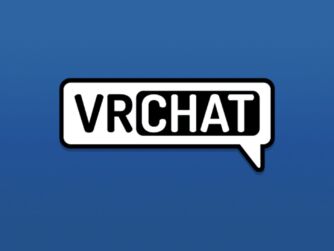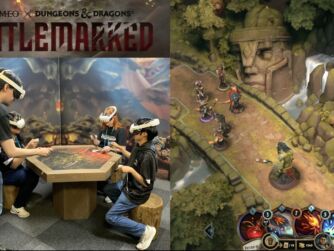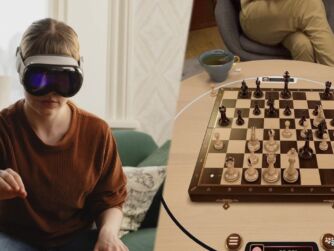I catch up with David Nahon of Dassault Systèmes to talk about his “Never Blind VR,” which uses Augmenting Reality within VR.
Become a Patron! Support The Voices of VR Podcast Patreon
Theme music: “Fatality” by Tigoolio
Subscribe to the Voices of VR podcast.
Rough Transcript
[00:00:05.412] Kent Bye: The Voices of VR Podcast.
[00:00:12.096] David Nahon: My name is David Nahon. I work for Daskosystem Lab, an innovation lab, whose purpose is to see and experiment things around VR, AR. We call this immersive virtuality. And we're finding out what has any value and what are the good user experiences that could be leveraging all this potential of this VR and AR and all that to eventually get into Daskosystem products.
[00:00:41.073] Kent Bye: I see. And so maybe tell me a bit about what the actual system that you have here is set up and what you were trying to test or experiment with in terms of virtual reality.
[00:00:50.896] David Nahon: OK. So we're hoping to build a solution that will be as effective as a cave, but only with affordable components. So we use an Oculus Rift, actually a DK1, but we could do it with the DK2 even better, and a Kinect for Windows 2. And what we're doing is we're re-injecting some of the real world elements into the VR experience through the Kinect. So the Kinect is sensing the surrounding of the user and brings a point cloud of the real world inside the virtual environment.
[00:01:27.575] Kent Bye: And so maybe talk about the decision to do a point cloud rather than trying to create a mesh or doing something more high fidelity and what you found with doing just a point cloud.
[00:01:36.298] David Nahon: Yeah, that's a good question. And actually we didn't like the big noisy effect that you may have in some of the polygon approach. And also, we discovered that the point cloud is conveying enough information for a lot of things, especially for the user to be able to see his own body, or at least perceive the presence of his own body at the proper scale, including the hands and the feet, and so himself. That was actually enough, first. And in some cases, I mean, you don't really need more than that. especially the other people, you know this uncanny valley thing, you don't want to try to be too realistic because then you fall into something which is strange and this point cloud is just before the uncanny valley so you don't have any issue of realism because your brain is actually going to fill the holes and you're going to be having the feeling you're seeing something much more dense in terms of information and presence than the actual static non-interactive point cloud.
[00:02:39.422] Kent Bye: Yeah, and one of the things that you had in your demo is that you have a chair and then a table, and depending on how close to that object it is, you turn it red. And then at one point, you put a bike in the scene, and the bike was a fully rendered high-fidelity in the context of the low-fidelity. For me, it kind of felt like, oh, I wanted the bike to be a point cloud, too. I knew in my mind that because it was different than the other reality that it was kind of breaking the rules. And so, yeah, I don't know if you heard that or if you have.
[00:03:07.951] David Nahon: That's an interesting feedback. Actually the scenario that we may imagine is that you're in a store and you want to buy a bike. So the bike is something you want to focus on. So having this high fidelity is a requirement because you want a realistic experience of something that does not exist in the real world in front of you. So you want to have just enough of the real world, so you have this low fidelity rendering of the real world, but anything that you want to access in terms of VR experience, you want it to be as high fidelity as you can.
[00:03:39.014] Kent Bye: I see, I see. So what's the sort of the use case that you imagine that, you know, you're trying to create these cave-like environments. So what specifically is the company that you're at trying to do or, you know, would you kind of be packaging this up or what kind of problems or use cases do you have for it?
[00:03:54.064] David Nahon: All right, so a sales condition where a shopper would be in a store and a salesperson would be presenting the variance of the offer is an obvious example of a possible usage of that. A same equivalent scenario but in the manufacturer's design teams can happen where a new concept is proposed to a product manager and he wants to review and compare variants and decide the range of sizes and colors and all these kind of activities that most industries are doing. So that can be obviously a very nice thing. and anytime where someone has to present something to someone else, basically. So that can even be learning, education or professional training. In the same way you want to be in front of a virtual machine, you need to learn how to operate and you have the expert who is close to you to guide you. and maybe at some stage you're going to be just yourself doing the procedures, but having someone in your near surrounding to whom you can ask questions and who supervises the activity, but not let you just be alone in your VR world, I think has value for the social dimension of it.
[00:05:12.805] Kent Bye: I see. And so would those be like co-located people, or would they be a virtual avatar brought into some sort of telepresence? Or how do you see this sort of social environment playing out in the use case that you're trying to design?
[00:05:23.751] David Nahon: Yeah, it's a good question. The general way people understand social in VR is like everyone at home connected in the same virtual universe and having interaction together. That's one social aspect. My first social preoccupation is what you happen to be doing in the real world and me talking to you now. We are two persons in the same world and there's a lot of things happening between you and me which are important to transfer into an experience which has some elements of virtuality in it. But you're right, what we're doing in a physical world can be also done in a distant world between two participants or one plus N participants, because basically once you have the head-mounted display on the head and potentially headphones with appropriate specialized sound, you would have something that you wouldn't be able to tell if the person is next to you physically or unless you touch the person, but you wouldn't be able if they are physically present or remote. So all this is probably going to work.
[00:06:27.245] Kent Bye: I see, and one of the things that was striking to me about your demo is that you're using a DK1 which has, you know, no positional tracking, but yet you have a Kinect V2 set up so that it's actually, you know, having a fully walkable experience when something that's, you know, fairly low resolution in VR, but yet at the same time it's It's fairly compelling to be able to walk around and lean down and look at a virtual object. In this case, it was a bicycle. And so when you're designing a system like this, are you trying to have this fully walkable virtual reality so that they can have this sense of embodied presence with their point cloud data avatar, looking at these virtual objects that they might be buying, and the importance of being able to walk around them and see them from all dimensions?
[00:07:09.523] David Nahon: Yeah, I mean basically we would like to have people have an experience like around a bigger object than just a bike and still be tracked in the room. We used the Kinect and the DK1 also for historical reasons. We didn't work too much on updating that to a DK2 which has positional tracking. We're quite sure that this would work quite easily and the vibe or the new coming, probably coming, ways to track the person in position in a big room will probably come from the person who actually sells the devices and so that opens scenarios that are definitely very interesting.
[00:07:48.399] Kent Bye: And being from the United States, I'm not as familiar with Dassault systems and so maybe you could tell me a little bit about what you're doing and how you see this type of system playing into whatever it is that you're selling.
[00:07:59.625] David Nahon: Yeah, Dassault Systèmes is the number two biggest European software editor and the number one in France. It's 12,000 persons, 57 locations worldwide, but we are a very big company and we come from CAD originally and then digital mock-up and then so-called product lifecycle management, PLM, and we're saying that now we're the 3D experience company. Our focus is 12 industries, ranging from historical CAD-based, CAD-focused areas like automotive or aerospace, industrial equipment, but now we're also very much focused in energy, life science, consumer goods, you name it. Even finances, whatever. And in these 12 industries, Dassault Systèmes is selling solutions which are tailored to the needs of each of those 12 industries. And this activity in the IV lab, which I conduct, are here to feed R&D with inspirational areas where this kind of user experience can bring new values.
[00:09:06.018] Kent Bye: I see.
[00:09:06.438] David Nahon: Great.
[00:09:06.658] Kent Bye: And so what would be the best possible outcome to a demo like this? Or where do you see VR going within your company from this point?
[00:09:14.762] David Nahon: I believe the training area is an area where you would like a lot to have this kind of experience. And some industries require that a lot, like energy, because you need to be able to react quickly in case of an emergency situation, for instance. The sales area is definitely important because our customers want to sell what they design to their own customers. So if we provide them with tools that let them go up to having a solution in store, it's obviously a good advantage. So these are two areas with obvious outcomes. And now, which is what is being done also with caves and much more expensive hardware, you have all the engineering domain where you used to have and you still have a lot of caves which cost millions. And these new opportunities like HMDs, but also affordable caves actually, will bring the potential for many more persons to check that what they're designing is still fine, if people can manage to pretend that they are the users of the system or actually be the users and in particular in manufacturing industries, you want to have the people who are going to assemble the plane, the car, whatever. You want them to do the task with their own body and you want even the people who are the workers to come in the cave or to come and use this. head-mounted display to do the task and have the people who are designing the task check and discuss with the person if what they've been doing is satisfactory. And this has been the biggest market for VR so far in the industry and it's going to be now accessible to small and medium business enterprise which is going to be huge also.
[00:11:05.041] Kent Bye: And so what do you see as the ultimate potential of virtual reality then and what it might be able to enable?
[00:11:12.660] David Nahon: Well, education, like children, educating culture in general, have people who want to understand something, know better something, go to sleep being a little bit less stupid. And if this can be done with 3D and the best 3D experience, which is VR, I'll be happy to see that happen before I retire, actually. And I'm quite sure I'm going to see that.
[00:11:38.281] Kent Bye: Great. Well, thank you so much. My pleasure. And thank you for listening! If you'd like to support the Voices of VR podcast, then please consider becoming a patron at patreon.com slash voicesofvr.



